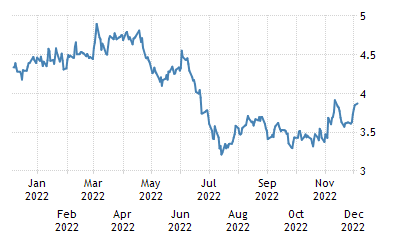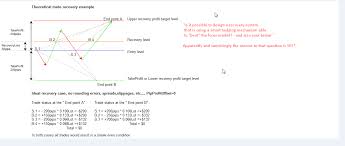
If you're a beginner, you might have trouble navigating the basic concepts and terminology of forex trading. Start by signing up for a demo and watching Rayner Teo's YouTube videos. Then, you can begin to learn about the basics of leverage and how to use a trading platform. This article will show you how to set up a demo account.
Signing up for a demo account
The reason why you should sign up for a demo account when trading forex is for two main reasons. Second, you will be able practice managing your money and making profits on demo accounts before you begin trading with real money. It is crucial to practice new trading strategies before you begin investing real money. Demo accounts are an excellent way to learn the system and identify any trading obstacles.

Learning from Rayner Teo's YouTube channel
If you are a beginner in the Forex market, then you should probably start by learning about the basic terms and indicators. You can also visit Investopedia to learn more about trading. These websites also offer videos with helpful tips on trading concepts. If you want to know more about forex, it is advisable to follow a Forex trader's YouTube channel to keep up to date with the latest trends.
Use a trading platform
There are many factors to consider when choosing the right trading platform. Because it allows you set automatic stop limits as well as guaranteed stop losses, a trading terminal is essential. Some platforms offer a trailing stop that automatically adjusts your stop limit based on price fluctuations. This protects you and locks in your profits, while minimizing your losses. A renko chart is an advanced trading indicator that can help you trade more efficiently.
Leverage
Forex traders can use high levels of leverage to increase their profit potential. Leverage can increase your profit potential by up to five hundredfold the initial capital. Many Forex brokers offer commission free trading. But, if your goal is to trade in currency options, it's important to know about the applicable commission. Leverage in futures trading is generally much lower than in forex. Leverage in forex trading can be expressed as a percentage or the total transaction value.
Points in Percentage
There are two basic units of measurement in foreign exchange trading - Points in Percentage in point. Points are the smallest increment to change in currency prices and can be represented as 0.0001 point. This would be one tenth point for most currency pairs. In this case, the currency pair you trade in would be worth one hundred points. The difference between a Canadian and US Dollar is one percent, or 0.0001.

Currency pairs
One currency pair is used to trade another currency. The price for one currency pair is calculated by taking the exchange rate of the base currency and converting it into the amount of the quoted currency. For example, if the price of EUR/USD changes from $1.12925 to $1.12935, one Pip is transferred. Technically, any currency can be traded, however, your Forex broker will limit you to only trading currencies that are available.
FAQ
What are the benefits of investing in a mutual fund?
-
Low cost - purchasing shares directly from the company is expensive. Purchase of shares through a mutual funds is more affordable.
-
Diversification – Most mutual funds are made up of a number of securities. One security's value will decrease and others will go up.
-
Professional management – professional managers ensure that the fund only purchases securities that are suitable for its goals.
-
Liquidity: Mutual funds allow you to have instant access cash. You can withdraw the money whenever and wherever you want.
-
Tax efficiency- Mutual funds can be tax efficient. You don't need to worry about capital gains and losses until you sell your shares.
-
Buy and sell of shares are free from transaction costs.
-
Mutual funds are simple to use. All you need to start a mutual fund is a bank account.
-
Flexibility – You can make changes to your holdings whenever you like without paying any additional fees.
-
Access to information- You can find out all about the fund and what it is doing.
-
Investment advice - ask questions and get the answers you need from the fund manager.
-
Security - know what kind of security your holdings are.
-
Control - you can control the way the fund makes its investment decisions.
-
Portfolio tracking - You can track the performance over time of your portfolio.
-
Easy withdrawal - it is easy to withdraw funds.
Investing through mutual funds has its disadvantages
-
Limited investment options - Not all possible investment opportunities are available in a mutual fund.
-
High expense ratio - Brokerage charges, administrative fees and operating expenses are some of the costs associated with owning shares in a mutual fund. These expenses will reduce your returns.
-
Lack of liquidity-Many mutual funds refuse to accept deposits. They can only be bought with cash. This restricts the amount you can invest.
-
Poor customer service - there is no single contact point for customers to complain about problems with a mutual fund. Instead, contact the broker, administrator, or salesperson of the mutual fund.
-
Ridiculous - If the fund is insolvent, you may lose everything.
What is a mutual fund?
Mutual funds are pools or money that is invested in securities. Mutual funds offer diversification and allow for all types investments to be represented. This helps reduce risk.
Professional managers manage mutual funds and make investment decisions. Some mutual funds allow investors to manage their portfolios.
Because they are less complicated and more risky, mutual funds are preferred to individual stocks.
Can bonds be traded?
Yes, they are. Bonds are traded on exchanges just as shares are. They have been trading on exchanges for years.
They are different in that you can't buy bonds directly from the issuer. You will need to go through a broker to purchase them.
Because there are less intermediaries, buying bonds is easier. This also means that if you want to sell a bond, you must find someone willing to buy it from you.
There are many types of bonds. Different bonds pay different interest rates.
Some pay quarterly interest, while others pay annual interest. These differences make it easy to compare bonds against each other.
Bonds are very useful when investing money. You would get 0.75% interest annually if you invested PS10,000 in savings. If you invested this same amount in a 10-year government bond, you would receive 12.5% interest per year.
If all of these investments were put into a portfolio, the total return would be greater if the bond investment was used.
What is a bond?
A bond agreement between two parties where money changes hands for goods and services. It is also known simply as a contract.
A bond is normally written on paper and signed by both the parties. This document includes details like the date, amount due, interest rate, and so on.
The bond can be used when there are risks, such if a company fails or someone violates a promise.
Many bonds are used in conjunction with mortgages and other types of loans. This means that the borrower must pay back the loan plus any interest payments.
Bonds can also raise money to finance large projects like the building of bridges and roads or hospitals.
A bond becomes due upon maturity. This means that the bond owner gets the principal amount plus any interest.
Lenders lose their money if a bond is not paid back.
What Is a Stock Exchange?
Companies can sell shares on a stock exchange. This allows investors the opportunity to invest in the company. The market determines the price of a share. The market usually determines the price of the share based on what people will pay for it.
Companies can also raise capital from investors through the stock exchange. Investors invest in companies to support their growth. Investors purchase shares in the company. Companies use their money for expansion and funding of their projects.
A stock exchange can have many different types of shares. Some shares are known as ordinary shares. These are the most commonly traded shares. Ordinary shares are traded in the open stock market. Prices for shares are determined by supply/demand.
Preferred shares and debt security are two other types of shares. When dividends are paid, preferred shares have priority over all other shares. A company issue bonds called debt securities, which must be repaid.
How are securities traded?
The stock market lets investors purchase shares of companies for cash. Companies issue shares to raise capital by selling them to investors. Investors can then sell these shares back at the company if they feel the company is worth something.
The price at which stocks trade on the open market is determined by supply and demand. If there are fewer buyers than vendors, the price will rise. However, if sellers are more numerous than buyers, the prices will drop.
There are two methods to trade stocks.
-
Directly from company
-
Through a broker
Statistics
- US resident who opens a new IBKR Pro individual or joint account receives a 0.25% rate reduction on margin loans. (nerdwallet.com)
- "If all of your money's in one stock, you could potentially lose 50% of it overnight," Moore says. (nerdwallet.com)
- Even if you find talent for trading stocks, allocating more than 10% of your portfolio to an individual stock can expose your savings to too much volatility. (nerdwallet.com)
- Our focus on Main Street investors reflects the fact that American households own $38 trillion worth of equities, more than 59 percent of the U.S. equity market either directly or indirectly through mutual funds, retirement accounts, and other investments. (sec.gov)
External Links
How To
How can I invest in bonds?
You will need to purchase a bond investment fund. You will be paid back at regular intervals despite low interest rates. You can earn money over time with these interest rates.
There are many different ways to invest your bonds.
-
Directly purchase individual bonds
-
Buy shares from a bond-fund fund
-
Investing via a broker/bank
-
Investing through a financial institution
-
Investing through a pension plan.
-
Invest directly through a broker.
-
Investing via a mutual fund
-
Investing via a unit trust
-
Investing via a life policy
-
Investing in a private capital fund
-
Investing via an index-linked fund
-
Investing through a hedge fund.